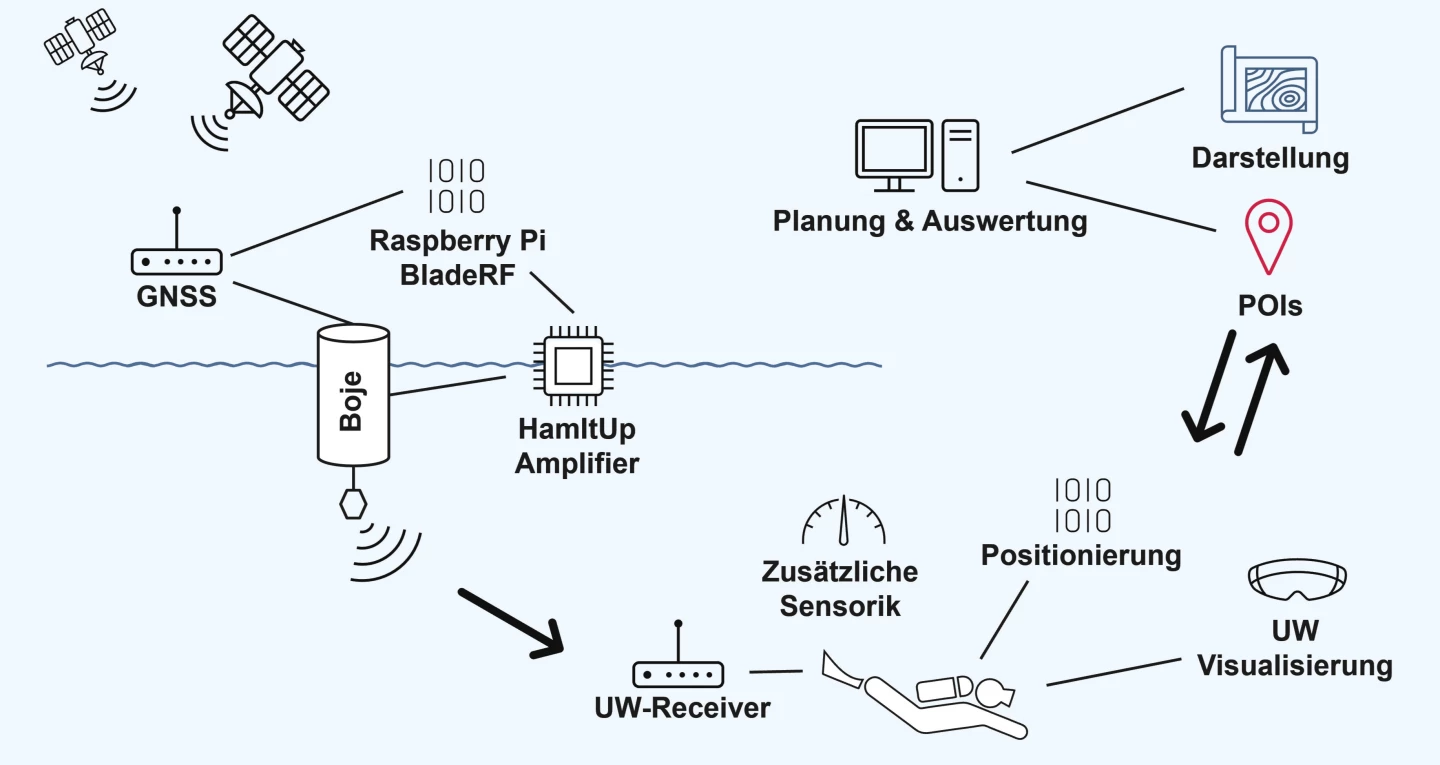Even in crystal-clear water, it can be easy for scuba divers to lose track of which way they're heading. An experimental new underwater navigation system could help keep that from happening, using a combination of electromagnetic waves and HUD (head-up display) tech.
Known as ScubaPOIs (Point Of Interest), the technology is being developed via an Austrian-government-funded project involving seven partnering institutes and organizations. At the heart of the system is a group of several surface-floating buoys which get anchored around the area where a dive is taking place.
Each buoy uses a GNSS (Global Navigation Satellite System) module to ascertain its geographical location. That data is continuously transmitted from the buoy down into the water, in the form of electromagnetic signals.
There are already similar systems which utilize acoustic signals, but studies indicate that such signals can be distressing and even harmful to marine wildlife.

Although not all electromagnetic signals travel well through water – that's why radio voice communication between divers is limited to short distances – the frequency utilized by ScubaPOIs is able to travel to a depth of 100 m (328 ft) and over a horizontal distance of at least 150 m (492 ft). Those figures may improve as the system is developed further.
A small receiver unit on each diver picks up the buoys' signals, comparing their strength and direction of origin. In this way, the device's onboard software is able to triangulate the diver's current geographical location relative to the buoys. That information is fed to a HUD module in the diver's mask, which projects a display telling them which way to go in order to reach a given destination.

"The biggest challenge for us was calculating the propagation of the electromagnetic signals underwater in order to obtain the appropriate distance values," says Dr. Philipp Berglez of Austria's Graz University of Technology. "The properties of the water, such as salinity, temperature, depth or conductivity, have a major influence here."
Importantly, in tests performed on golden rainbow trout, the environmentally sensitive fish didn't show any adverse effects even four months after being subjected to the type of electromagnetic signals used in the system.
It is hoped that ScubaPOIs may ultimately find use in applications such as tourist diving, aquatic ecology and underwater archaeology.
Source: TU Graz






